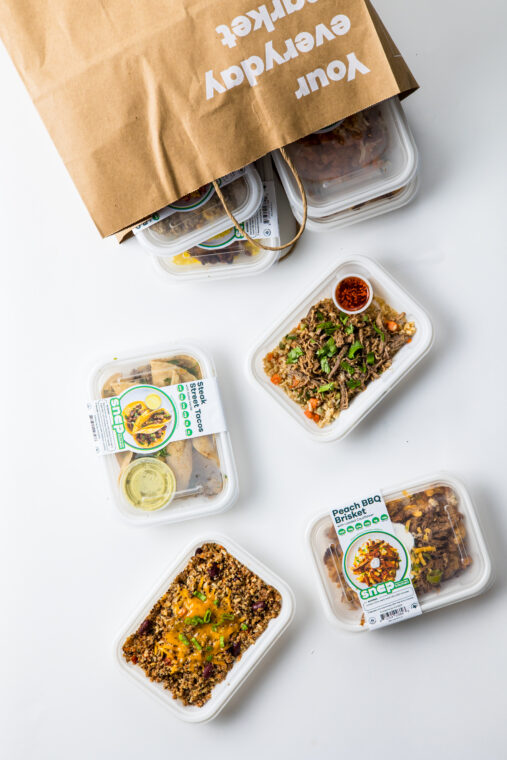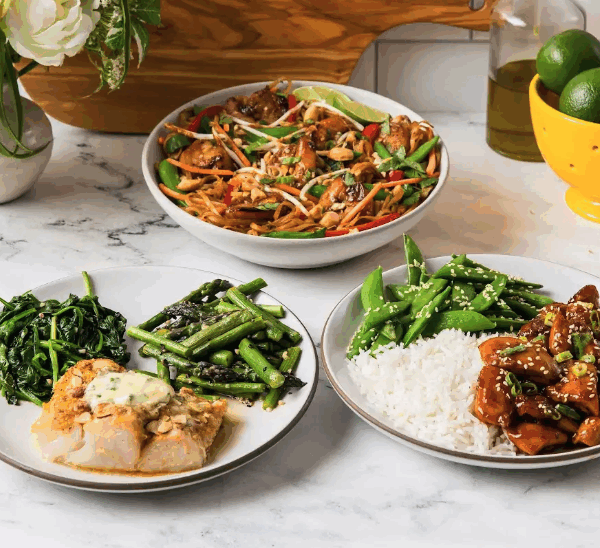The term GLP-1 is a total buzzword right now, with many people taking medications like GLP-1 agonists or receptor agonists, or looking to increase their GLP-1 naturally. But what is GLP-1, and how can you support your weight loss goals whether or not you decide to take medication?
What is GLP-1
GLP-1 (Glucagon-like peptide-1) is a hormone the body naturally produces to regulate your blood sugar levels. To do this, it stimulates the release of insulin (think of this as the key that unlocks your cells to allow glucose inside) and decreases the release of glucagon, a hormone that increases blood sugar. GLP-1 also slows digestion, helping you feel full for longer and possibly supporting weight loss.
What are GLP-1 Medications?
There are currently 10 GLP-1 drugs available in the U.S., most of which are GLP-1 receptor agonists. Originally used to treat type 2 diabetes, these drugs were later found to reduce appetite and support weight loss. Medications like Ozempic and Wegovy work by mimicking natural GLP-1, while others target both GLP-1 and GIP receptors for a combined effect. They primarily slow digestion, boost insulin production, and reduce appetite. Side effects can include muscle loss, digestive issues, nausea, and malnutrition due to decreased appetite.
Early research shows promise although effects often stop once the medication is discontinued. These drugs work best alongside diet and exercise, so if you’re on a GLP-1 medication, it’s smart to support that effort with a complementary diet of high protein and high fiber.
Can You Increase Your GLP-1 Levels Naturally?
You can, which is really cool! Foods higher in protein, fiber, and healthy fats can naturally trigger GLP-1’s release. (Our GLP-1 meal plan features this exact framework).
Protein (aim for 30+ grams per meal)
High-quality meats (beef, pork, poultry, wild game), seafood, eggs, full-fat dairy, whey protein, and more
Fiber
Fruits and veggies, nuts (they contain healthy fats, too!), whole grains, beans and other legumes, lentils, and more
Healthy Fats
Avocados (these all fall into the fiber camp), extra virgin olive oil, well-sourced animal fats, olives, and others
An added benefit of consuming these foods in combination is that even if you’re taking a GLP-1 medication, they will support your body and prevent some of the side effects common with these drugs. Even if your goal isn’t weight loss, consuming a diet high in protein, fiber, and healthy fats supports overall health and wellness, including muscle maintenance or growth, gut health, and brain health.
Supplements
We always recommend consulting your doctor before making any diet, lifestyle, or supplement changes, but there are certain supplements that can help increase your body’s own GLP-1 levels. These include Berberine, sometimes called “nature’s Ozempic”, Curcumin (the active ingredient in Turmeric), and fiber supplementation. There are also increasing amounts of GLP-1 probiotics and postbiotics, designed to support your body’s own natural GLP-1 production.
Taking the Guesswork Out of Your GLP-1 Diet
If the idea of eating more protein, fiber, and healthy fats to support your body naturally sounds great, but also overwhelming, it doesn’t have to be. Snap has a meal plan for that! Our GLP-1 Meal Plan was designed by our in-house RD (that’s me!) to feature a selection of high protein (33g or more), high fiber meals (5g or more) that will keep you satisfied and support your goals, whether you want to boost your GLP-1 naturally, are on GLP-1 medications and want to support your body, or just want to support your overall muscle and digestive health.






Leave a Reply
No Comments